1948 Ariel Square Four Mk 1
With Ian Falloon
Although a four-cylinder motorcycle is normal today, it wasn’t always so. Before World War II inline fours, with the engine lengthwise, were considered unwieldy, and across-the-frame fours too wide.
Then one day in late 1928 a London motorcycle dealer named Edward Turner sketched the idea of two parallel twins two by two on the back of a cigarette packet.
Turner made a trip to the Midlands trying to sell the idea, and while BSA nearly bought it, it was Ariel that provided Turner a small drawing office and the resources to see his idea to fruition.
Turner went on to become arguably the most influential person in the British motorcycle industry, and his square-four, or Squariel, became a legend in its lifetime.
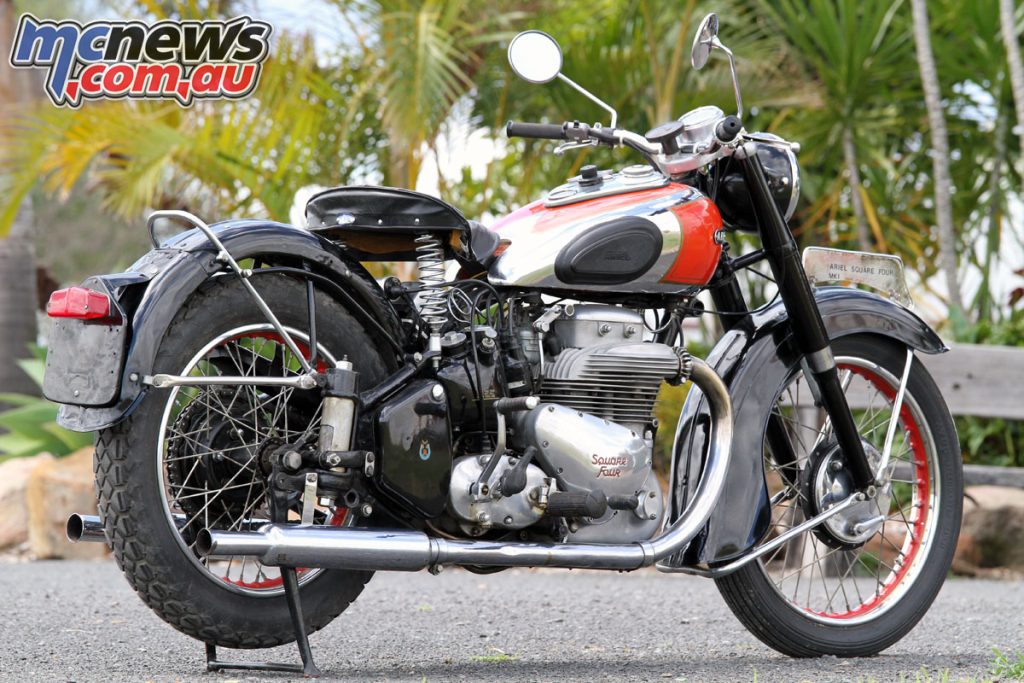
The first production square-four appeared in 1931 and was a cast-iron 500 with a chain-driven single overhead camshaft. The basic layout of cylinders at the corners of a square with two 180 degree crankshafts geared together and contra-rotating would set the pattern for the future.
To make the engine more suitable for sidecar use a 600 cc version was added in 1932, but there were many problems with the initial design.
Early square-fours didn’t take to tuning, and although Ben Bickell managed to lap Brooklands at over 175 km/h his supercharged 500 kept blowing cylinder head gaskets and he never finished a race.
Similar problems befell Somerville Sykes in the 1931 Senior TT. His blown 500 cc square-four produced 40 horsepower but he retired with a blown cylinder head gasket.
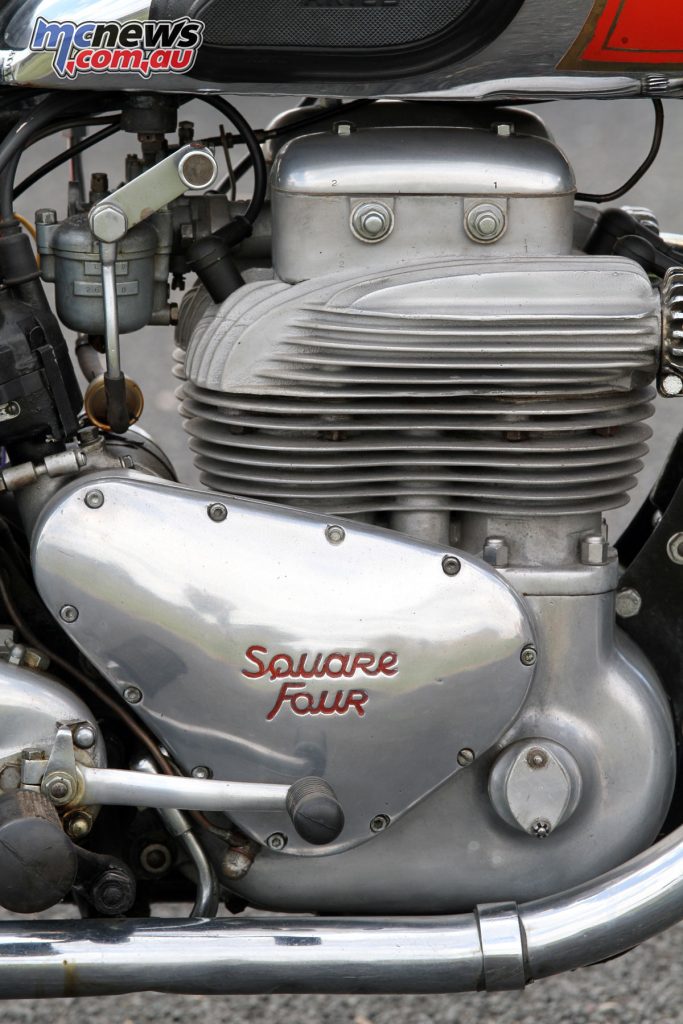
To overcome these problems the square-four engine was completely updated for 1936. Although the new engine retained the two-by-two cylinder format, in most other respects it was totally revised.
Instead of the earlier overhead camshaft the valves were now pushrod-operated. The crankshafts were coupled by outboard gears on the left side and the big-end bearings changed from roller to white metal in light-alloy connecting rods.
The capacity was increased to 1000 cc, and the weight reduced. Apart for a sprung hub that became an option in 1939, the square-four continued until the outbreak of war largely unchanged.
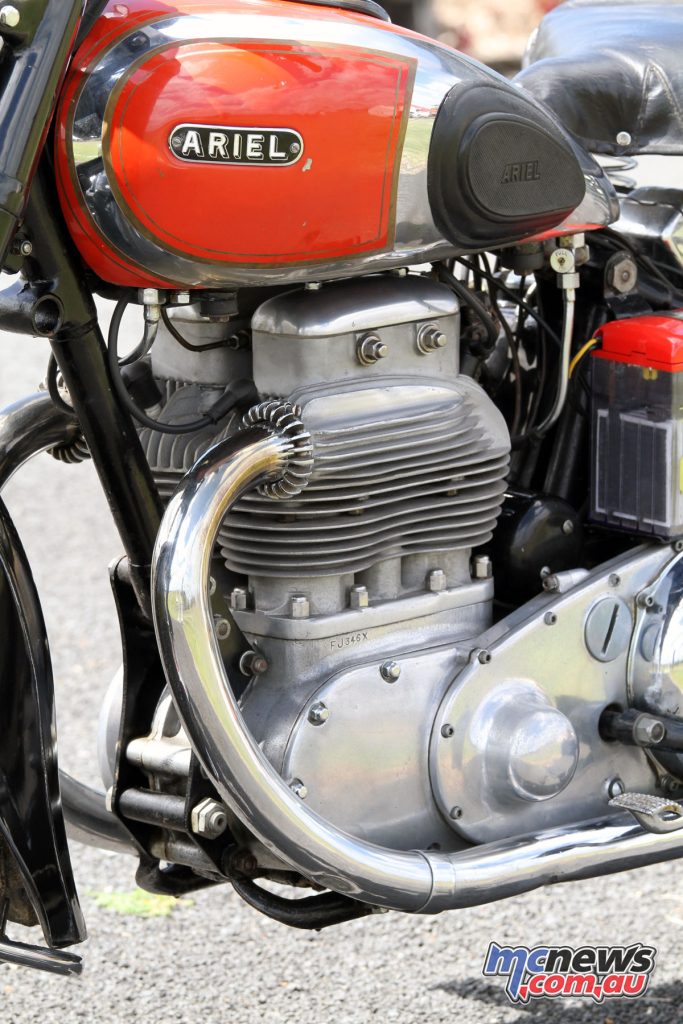
Resurrected after World War II, the square-four initially retained the cast-iron 65 x 75 mm 997 cc engine of the pre-war Squariel. But the addition of telescopic front forks and the compensated-link plunger rear springing saw the first post-war models now weighing over 225 kg.
Ariel figured it was time to shed some weight and for the 1949 Mk 1 the old cast-iron cylinder block and head were scrapped and substituted with alloy castings. The claimed weight saving was an optimistic “half a hundredweight” (25 kg), but the real weight saving was 15 kg.
The redesigned alloy cylinder head now included 20 fixing points instead of 12 and incorporated the rocker boxes and inlet and exhaust manifolds. The alloy castings also improved cooling and with 6:1 compression ratio, to cope with the 72-octane “pool” petrol, and an automotive style bi-starter Solex carburettor, the power was 34.5 horsepower at 5400 rpm.
Coil ignition, with a car-type distributor, and a large 70-Watt separate dynamo replaced the Lucas Magdyno. As on the pre-war examples lubrication was dry sump and the gearbox a four-speed Burman.
The new engine also improved the Squariel’s legendary characteristic; its acceleration. The rotary twist grip provided unusually delicate throttle control, this combined with relatively low flywheel weight and four cylinders giving instant response. The lighter engine also contributed to marginally improved handling and liveliness but the engine was always too much for the frame.
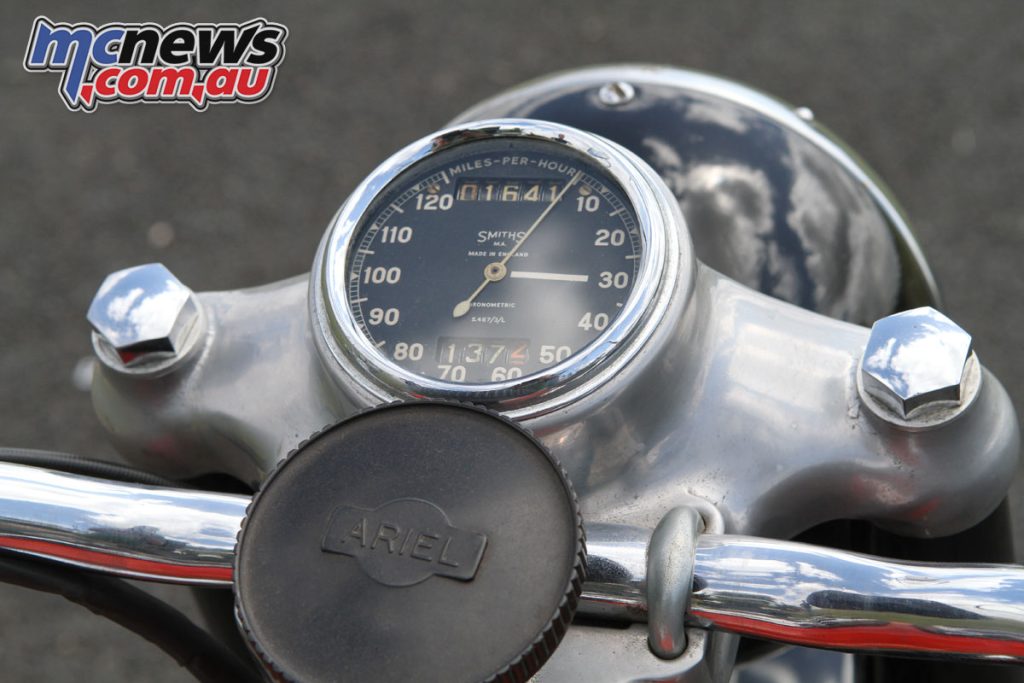
The Mk 1 frame was part cradle, and with an oil-damped telescopic front fork, and with the option of an undamped plunger link sprung hub the weight was 197 kg.
Rigid frame versions weighed 187 kg. Rolling on a 1422 mm wheelbase the Mk 1 Squariel was a surprisingly compact machine for its capacity.
The tyres were also quite large for the day at 3.25 x 19in front and 4.00 x 18in rear. The four-pipe Mark II Square-Four appeared in 1954, lasting until 1958.
All later Square Fours had plunger rear springing, although two prototype pivoted-fork models were constructed but not put into production.
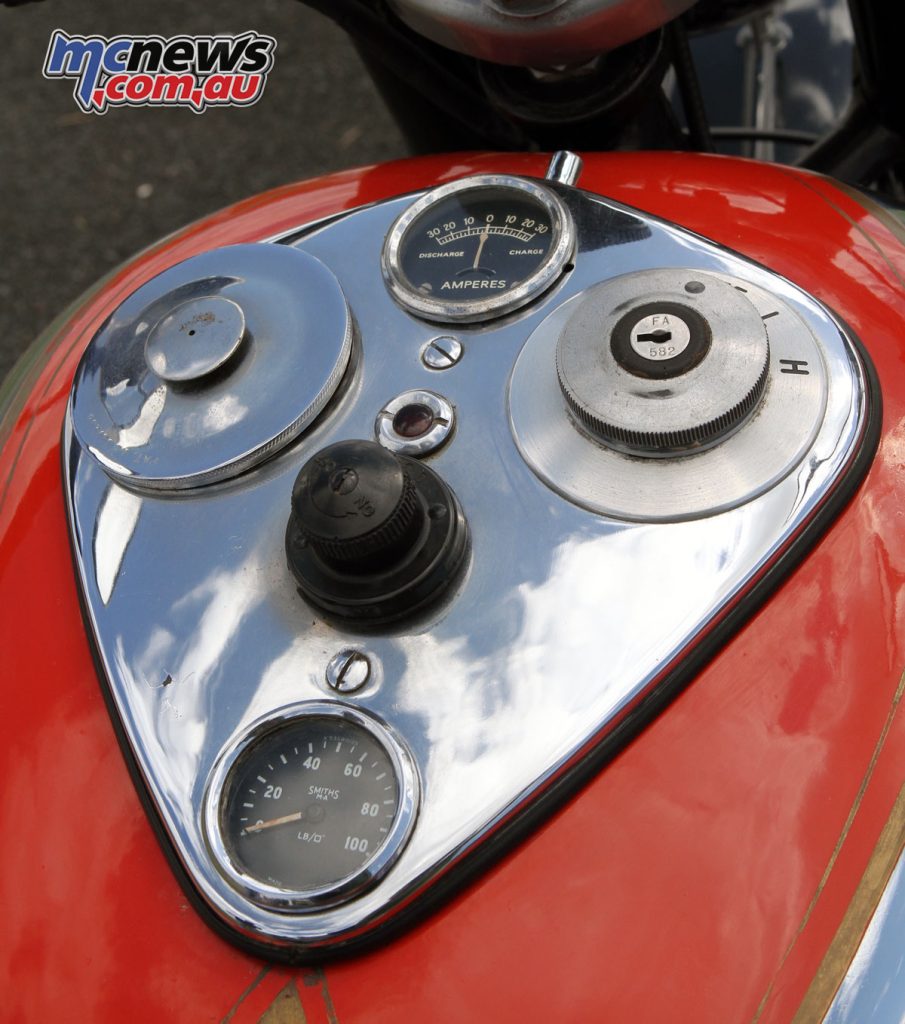
With production spanning 27 years Ariel’s square-four was never a mainstream motorcycle. Revered for its smoothness, comfort and acceleration, the Squariel was always expensive and appealed as a status symbol rather than regular transportation.
After production had officially ended George and Tim Healey started making their own spares and in 1973 released the Healey square-four with an Egli-designed frame.
Only 20 Healeys were manufactured, the last in 1977. Ariel Square-Four engines were also produced under licence in Canada and used in pairs to power helicopters. Ultimately a lack of development resulted in square-four’s demise but now it is acknowledged as one of Britain’s finest classic motorcycles.
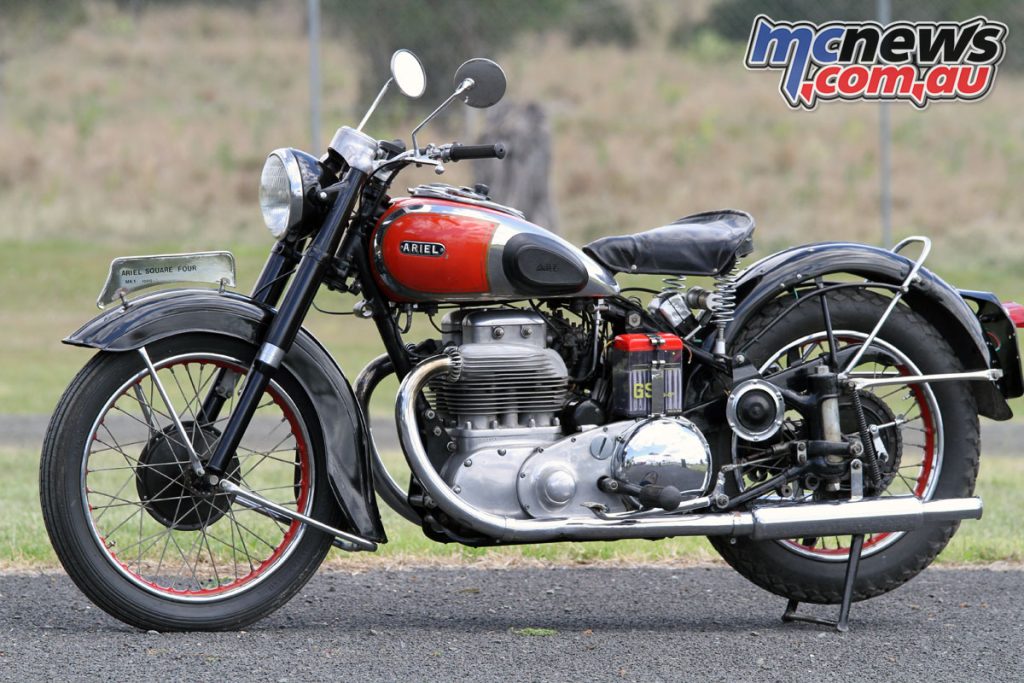
| 1948 Ariel Square Four Mark 1 Specifications | |
| Engine | ‘Squariel’, 997 cc, 4-stroke, square four, air-cooled, OHV, 8-valve |
| Power | 34.5 horsepower at 5400 rpm |
| Carburetion | Solex carburettor |
| Transmission | Four-speed manual gearbox to chain final drive |
| Frame type | Tubular single loop |
| Suspension | Telscopic fork, oil damped |
| Brakes | Drums 7 inch (F)/8 inch rear (R) |
| Tyres | 3.25 x 19 in, 4.00 x 18 in |
| Wheelbase | 1422 mm |
| Dimensions | 2100 mm |
| Dry Weight | 193 kg |























